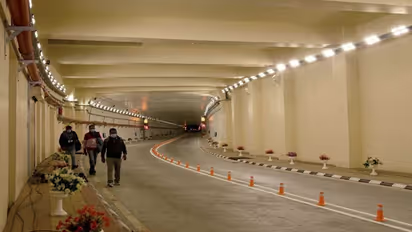Atal Tunnel to aid Army against Chinese aggression along Leh-Ladakh
Team Asianet Newsable | Asianet News
Published : Oct 03, 2020, 01:00 PM ISTAtal tunnel plays a significant role in Indo-China strategic positioning. On one side, communication between Lahul-Spiti and Leh-Ladakh will be easier and on the other hand, communication with the army in this area will also be simpler. The Atal Tunnel will give a big push to the army to counter Chinese aggression.
Stay updated with the Breaking News Today and Latest News from across India and around the world. Get real-time updates, in-depth analysis, and comprehensive coverage of India News, World News, Indian Defence News, Kerala News, and Karnataka News. From politics to current affairs, follow every major story as it unfolds. Get real-time updates from IMD on major cities weather forecasts, including Rain alerts, Cyclone warnings, and temperature trends. Download the Asianet News Official App from the Android Play Store and iPhone App Store for accurate and timely news updates anytime, anywhere.
